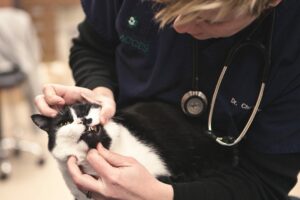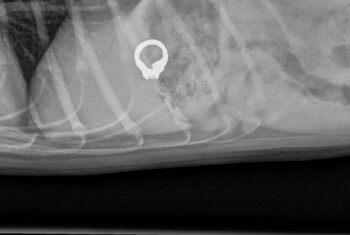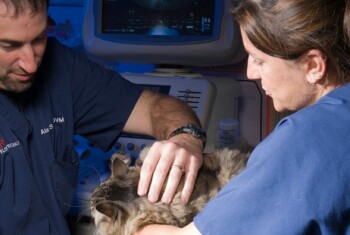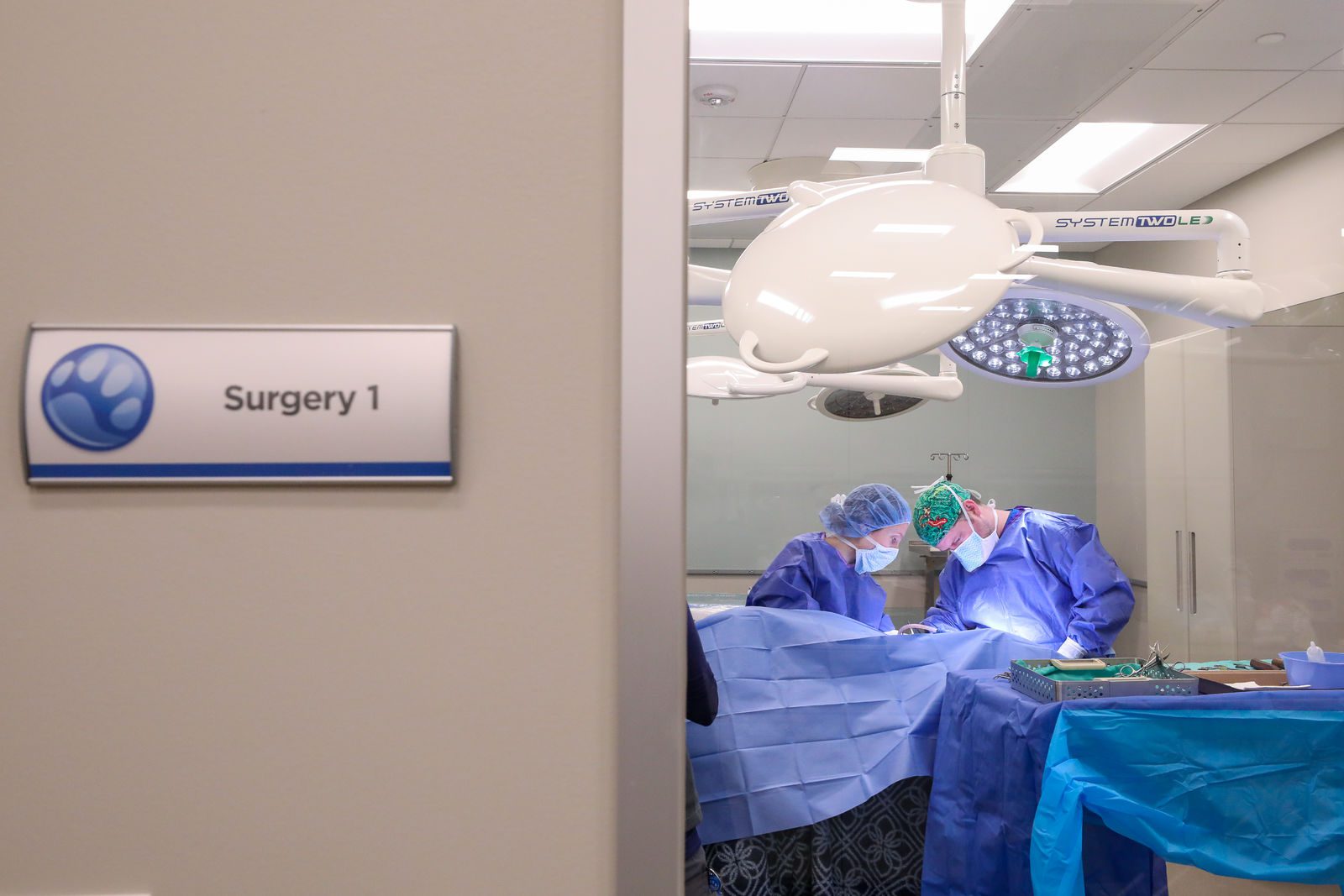Veterinary root canals: What you need to know.
A root canal is a procedure designed to eliminate pain and remove infection from within the tooth (endodontics) and around the base of the tooth at its apex, which is deep within the bone. If you have ever had an abscessed tooth, you know how painful these infected teeth can be!
The painful nerve fibers and infected material inside the tooth are carefully removed to create a clean, hollow space. The  canal is filled with a sealant and a rubber-like material (gutta-percha) in an effort to prevent any communication between the tooth and surrounding bone. The original fracture site (and/or any additional access points that we created) are then sealed, using the same materials a human dentist would use, to prevent any contamination from oral bacteria in saliva. The filling is polished and shaped to make the surface as smooth and attractive as possible.
canal is filled with a sealant and a rubber-like material (gutta-percha) in an effort to prevent any communication between the tooth and surrounding bone. The original fracture site (and/or any additional access points that we created) are then sealed, using the same materials a human dentist would use, to prevent any contamination from oral bacteria in saliva. The filling is polished and shaped to make the surface as smooth and attractive as possible.
What is a crown?
The colloquial term for a crown is a “cap.” Essentially, a crown is a covering (typically metal in dogs and cats, although tooth-colored versions are available) on a tooth that has been previously treated with a root canal and specially prepped to accommodate the crown. A tooth that has been treated with a root canal (or any non-vital tooth) is considered more brittle and breakable than a living tooth. A crown will help disperse the very strong bite forces that a dog or cat places on his or her teeth and help minimize any ongoing risk of breakage.
Who should receive a crown?
A crown is designed to help minimize the risk of fracture recurrence in any patient; however, due to their occupation, police dogs and military dogs should absolutely receive a crown in order to protect their precious and strategic weapons! Working dogs, hunting dogs and/or dogs that are particularly hard on their teeth should also be considered for crown therapy.
Some veterinary dentists feel crowns should be placed on every tooth that has had root canal therapy; however, this decision is based on each individual pet, the affected tooth and the pet’s behavior regarding oral play, chewing and how the fracture occurred in the first place.
Why not just extract the tooth?
Unfortunately, there is no such thing as “just extracting” when it comes to an animal’s tooth, especially strategic teeth.  Our pet’s teeth are designed to stay in the mouth under extreme forces (think of a lioness taking down a zebra). When otherwise healthy (i.e. not affected by concurrent diseases such as periodontal disease), it is very difficult to extract an animal’s tooth.
Our pet’s teeth are designed to stay in the mouth under extreme forces (think of a lioness taking down a zebra). When otherwise healthy (i.e. not affected by concurrent diseases such as periodontal disease), it is very difficult to extract an animal’s tooth.
Often, extraction involves major oral surgery. The canines, upper fourth premolar and lower first molar, in particular, are considered strategic teeth because they are very large and functional. Along with the pain and discomfort associated with surgery, complications can occur, such as a hole extending from the mouth to the nose, jaw fracture and a change in lip conformation leading to painful ulcers. Consequently, when appropriate, we do our very best to preserve these strategic teeth.


